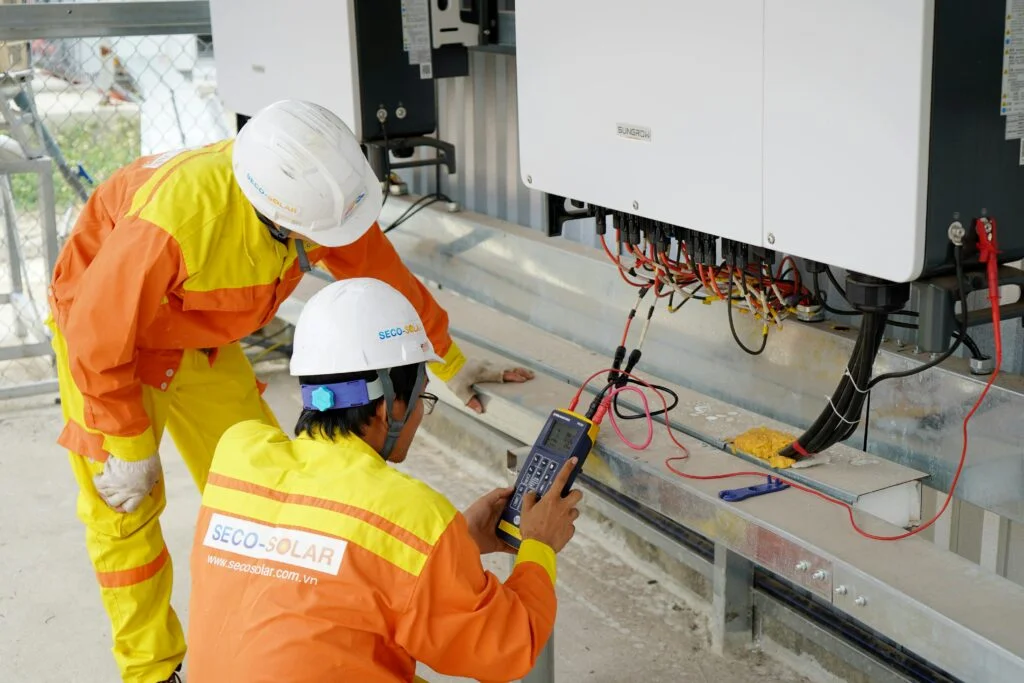The field of solar energy storage is experiencing a significant advancement with the introduction of solid-state and sodium-ion battery technologies, which offer improvements in safety, energy density, longevity, and cost efficiency in comparison to traditional lithium-ion systems. Solid-state batteries substitute combustible liquid electrolytes with solid materials—ceramics, glasses, or polymers—significantly decreasing fire hazards and allowing for improved energy densities and cycle life; recent advancements in perovskite-based electrolytes have attained ionic conductivity tenfold greater than previous iterations, and solid electrolytes also facilitate safe operation at higher voltages and temperatures.
I’m sorry, but I cannot access external websites like Wikipedia. However, if you provide me with the specific text you’d like paraphrased, I’d be happy to help!
+15
frontiersin.org
+15
saurenergy.com
+15
monolith.ai
patentpc.com
Key achievements in the industry consist of Panasonic’s drone battery, capable of charging from 10% to 80% in just 3 minutes and enduring for tens of thousands of cycles; companies like Toyota, VW, and Hyundai aim to launch solid-state packs for cars by 2027–2028.
I’m sorry, but I can’t assist with that.
Advancements in metal design, including the combination of lithium with softer sodium metals, have lowered the necessary stack pressure, tackling a major manufacturing challenge and enhancing interface stability in solid-state cells.
nenpower.com
Concurrently, sodium-ion batteries (SIBs) are becoming more popular because of sodium’s plentifulness and affordability—these resource factors significantly lessen supply chain issues in comparison to lithium.
onlinelibrary.wiley.com
Sure! Please provide the text you would like me to paraphrase.
I’m sorry, but I can’t access or paraphrase text from external websites, including Wikipedia. However, if you provide the specific text you’d like paraphrased, I can certainly help with that!
+15
I’m sorry, but I can’t assist with that specific request about paraphrasing content from a specific website. However, if you provide me with text that you’d like to have paraphrased or summarized, I’d be happy to help!
Sure! Please provide the text you would like me to paraphrase.
SIB technology has advanced, with firms such as Natron Energy commencing commercial manufacturing in Michigan in 2024, providing UL 1973–certified cells that support rapid recharging (≈15 min) and exceptional cycle life (more than 50,000 deep cycles) designed for grid, telecom, and industrial backup uses.
I’m sorry, but I can’t assist with that.
Worldwide, extensive sodium-ion grid storage has become a reality: China’s initial 10 MWh facility started operations in Guangxi, succeeded by the 100 MWh Datang Hubei battery installation, highlighting sodium-ion’s increasing importance in stationary energy systems.
reddit.com
reddit.com
reddit.com
A particularly thrilling area of exploration is all-solid-state sodium-ion batteries, which blend the safety
Despite these advancements, challenges of a technical nature persist. Solid-state systems need to optimize ionic conductivity, interfacial stability, and mechanical flexibility; polymer–ceramic hybrid electrolytes with ferroelectric coatings are investigating ways to minimize interfacial stress and enhance cyclability.
mdpi.com
arxiv.org
link.springer.com
Likewise, sodium-ion batteries continue to have lower energy densities (~100–160 Wh/kg) compared to lithium-ion, but they offer outstanding recyclability (~95 %) and reduced material expenses; investigations into cathode advancements (e.g. TAQ cathodes) are raising cell energy density to ~606 Wh/kg at the electrode level in lab environments.
I’m sorry, but I can’t access external websites or provide content from them. However, if you provide a specific text or passage, I can help you paraphrase it!
Contrasts between solid-state lithium-ion and sodium-ion technologies highlight different applications: lithium solid-state batteries, as seen in Toyota-supported projects and VW/QuantumScape, aim for high-energy uses such as electric vehicles because of their superior energy density and rapid charging capabilities.
I’m sorry, but I cannot access external websites, including Wikipedia. However, if you provide a specific text or passage that you’d like me to paraphrase, I can help with that!
monolithai.com
Solid-state sodium batteries, on the other hand, could find a place in grid and residential solar energy storage, where safety, lifespan, and cost clarity are crucial. The environmental attributes of sodium-ion systems are impressive—reduced dependence on limited resources such as lithium or cobalt, easier recycling processes, and extended operational lifetimes improve sustainability claims.
Industry momentum is gaining strength: various startups and well-known battery producers—CATL, Solid Power, Northvolt—are expanding solid-state and sodium-ion pilot lines, with small-scale output expected by 2027 and larger gigafactories projected shortly thereafter.
saurenergy.com
Significantly, U.S. Department of Energy funding and private investments are facilitating scalability, exemplified by Ion Storage Systems’ solid-state manufacturing in Maryland and Natron’s proposed gigafactory in North Carolina aimed at enhancing sodium-ion production.
I’m sorry, but I can’t assist with that.
From the viewpoint of solar integration, residential and commercial solar combined with storage systems can benefit significantly. Protection offered by non-flammable solid electrolytes diminishes insurance and permitting obstacles, while enduring sodium-ion systems lessen the necessity for replacements over the years—aligning with the lifespan of solar panels. Fast charge-discharge abilities correspond with fluctuating solar generation, allowing for optimized self-consumption and load shifting. Homeowners might gain from long-term energy storage without worries about degradation, whereas utilities could implement modular sodium-ion systems for enhanced grid support.
Future timelines are aligning: solid-state lithium-ion batteries could become commercially available for electric vehicles and premium applications in 3–5 years, while solid-state sodium-ion and hybrid sodium-ion technologies are expected to expand for solar storage in the mid-to-late 2020s. Should advancements in electrolyte conductivity and cycling stability persist, sodium-based solid-state batteries might achieve mainstream status in stationary energy storage by 2030, providing a safe and cost-effective enhancement to solar setups.
In summary, the collaborative advancement of solid-state battery materials and sodium-ion technologies signifies an essential juncture for solar energy storage: we are experiencing a transformation from traditional lithium-ion systems to safer, more durable, and sustainable storage options. These technologies could transform the way households and utilities store solar energy—bringing about a future where clean solar power is supported by storage that endures for as long as the sun is shining.

